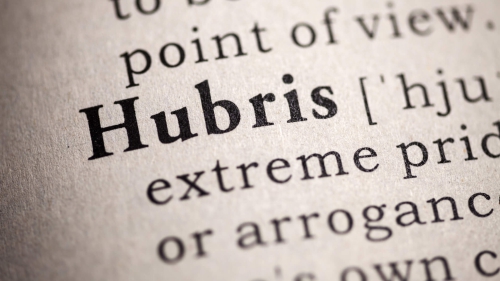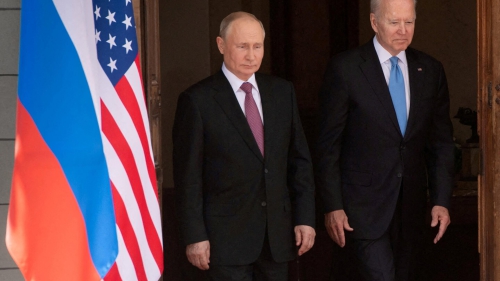Saddam: The seemingly immortal beloved
Baghdad at night is thoroughly unimpressive. Absent are quaint bistros, well-lit main streets, illuminated waterfalls and red-carpet entryways to posh restaurants. Not that Baghdad ever was known for its visual splendor after dark; but at one time visitors could at least expect the city to greet them with a simple politeness becoming of a nation's capital. Unfortunately, in 2000, such politeness has been replaced by a cold indifference that leaves the weary traveler's first glimpses rather unfulfilled.
Baghdad cannot be blamed however for her unkempt condition, for the Gulf War and 10 years of sanctions have decimated her wardrobe to the point that she has but one good dress, which typically hangs lifeless in her boudoir as she reminisces over times when suitors of all sorts would come courting. But in 2000, the suitors have all gone courting abroad in places such as Amman, Abu Dhabi and Kuwait City.
But every once and again, one man will come calling. One man will send her clamoring for her corset. One man will coax her from her balcony for one more dance, one more pageant, one more reminder of the beauty that lies beneath her disheveled appearance. That man is Saddam Hussein.
To the traveler, this might come as a shock. Saddam Hussein, after all, bears a great deal of responsibility for his beloved city's -- his beloved country's -- state of disrepair. But like a pimp who dolls up his old madam every so often for a nostalgic night on the town, Saddam dresses his darling on occasion to remind her of the splendor of yesteryear. It is an abusive relationship, but one of codependence that suits the romantic memories of both.
On such special occasions, Saddam parades up and down Baghdad's streets, making the poor city feel useful once again. But when it is all over, all that remains is the memory of an enchanted evening.
In the afterglow, Baghdad turns to the only reminders she has: the portraits of Saddam that she meticulously places throughout her house as she eagerly anticipates her next rendezvous with her suitor. These remembrances are what greet the weary traveler upon entering Baghdad.
Whether traveling from East or West, by land or by sea, the visitor to Iraq finds it hard to miss the ever-present image of Saddam Hussein. One would have to be virtually blind and lack all deductive faculties to miss the overwhelming public display of affection Iraq has for Saddam. It is a sick and obsessive display, one that has been forced on Iraq by a maniacal tyrant, but one that separates Iraq from almost every other country in the Middle East.
In nations such as Saudi Arabia, Syria, Jordan, the Emirates and Qatar, it is expected that portraits of heads of state will abound on boardwalks, in office buildings, atop monuments and on billboards throughout these nations' cities. But in these places, portraits are staid, formal pictures and artistic representations. They capture a dull regality that is as far from the truth as possible.
The ailing Hafiz al-Asad is always warm and full-faced despite his true feeble and drawn appearance. King Hussein is frozen in time as a stately monarch with distinguished gray, despite the ravages of cancer and reality of his death. And King Fahad, who more often than not looks catatonic and distant, appears in his portraits to actually still belong to the ranks of the conscious.
But unlike her Mideast cohorts, Iraq shuns the airbrush in paying tribute to Saddam. Iraq has watched Saddam age, and she accepts him at all stages of life. Yes, there are the patented black and white headshots taken in the 1970s that present Saddam as a sharp, cheerful, svelte young politician at the top of his game. But throughout the city Saddam can be seen in artistic representations that capture him at all points in his life doing all those things that comprise the daily bustle of Iraqi existence.
There is Saddam the Arab, decked out in traditional cloak and headdress. He comes across as a champion of the Arab people, a tribal leader of yore, ready to wield scimitar on horseback against Iraq's enemies.
There is Saddam the Oil Baron, a businessman out surveying his oil well minions. In this representation he has never looked more sheik. But how could he appear any different while wearing dark sunglasses, a fisherman's hat and a safari shirt.
Saddam the soldier is quite common. Beret resting on his knee, this young, tea-drinking grunt, dressed in nondescript green fatigues is the embodiment of the inexperienced recruit, making his way in one of the few jobs left in Iraq that provides any sort of security.
Saddam the Bedouin, who makes less frequent appearances, stands sipping coffee in more rugged desert wear. This Saddam is in touch with his humble Arab roots.
These images are somewhat expected in an Arab country. Every ruler from Morocco to the Gulf wants to be seen as culturally tied to his people, militarily in control and administratively astute. But in Iraq, Saddam is portrayed as being so much more.
Along with the aforementioned representations of "The General," one can also find Saddam the Tourist. As unflattering as it might seem, there stands Saddam in a casual blazer, camera resting on a well-developed paunch. With chins cascading downwards and jowls thick and meaty, this Saddam has had the sumptuous hindquarters of fattened lamb at the top of his dinner menu for far too long.
Straight from the Swiss Alps to the campus of Basra University comes Saddam the Tiroler. What Teutonic adventurism has to do with either education or the Iraqi people is unclear. But donning a reasonable facsimile of a mountaineer's hat with a swanky necktie to polish off the image, Saddam seems to be stretching the metaphor to say to Iraqis that they can climb whatever mountains stand as obstacles to Iraq's rebirth.
At the border between Iraq and Jordan, Saddam a la Che Guevara stops in for a visit. Standing authoritatively aside Baghdad's "space needle," is the 10 meter statue of Saddam the welcoming father, whose outstretched arm suggests more of a coerced "offer you can't refuse," Mafia invitation than a warm or even cordial welcome. And in the lobby of that same structure, Saddam is even woven into carpet, presumably for all to walk upon, although it currently hangs decoratively on the wall. Now that's humility.
The message is clear: Saddam is Every Man. He is as likely to show up to unclog the toilet or pack your groceries as he is to press palms with military brass or to review anti-aircraft troop operations.
To the traveler it is surreal. Saddam is nothing like the megalomaniac seen every so often on television. Here in America he is always shown in dated news clips, swaggering confidently before throngs of hysterical Iraqis in dress fatigues, revolver at his hip. In fact, Americans never even hear his voice. To us he is a detached dictator with no more appeal than Pol Pot or Muamer Qadhafi.
The corollary effect of this representation is that the Iraqi people seem, to the American, to be just as detached for allowing such a man to continue to control their lives. But this is where America fails to understand the relationship.
Like a clique of bratty, 15 year-old girls, America's pundits ask each other rhetorically of Iraq: "What does she even see in him?" But these gum-chewing blow-hards are just as out of touch with Iraq as they are with their own teenagers.
Indeed, Iraq stands unflinchingly by her man. Driven into isolation by all the popular countries of the world, she turns to Saddam as the one figure who will give her any attention, even if that attention includes black eyes, scars and cigarette burns. And given the fear the name "Saddam" strikes in the hearts of Iraqis, it is no wonder that, like a battered wife, Iraq makes excuses for Saddam and remains in the relationship; for she has no choice.
So the traveler tours Baghdad snickering at the absurdity of display, while Iraqis walk the streets, living the reality of the relationship. Sure, deep inside a "burning bed" scenario awaits Saddam; but with no one to which to turn, Baghdad -- all of Iraq -- will continue to pine over her seemingly immortal beloved.
Ali Asadullah is the Editor of iviews.com. He traveled through Iraq on a 3-week fact-finding mission in August and September of 1999

















